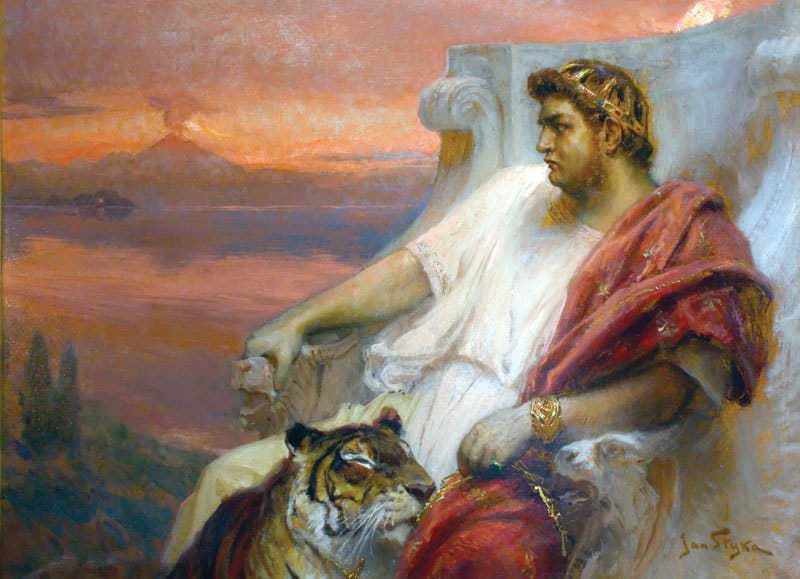Emperor Nero ruled the Roman Empire from 54-68 AD and is usually looked upon as a bloodthirsty tyrant who murdered for pleasure and used his role as a means of living an opulent lifestyle. Throughout his reign, he executed a huge number of people for no other reason than the fact he didn’t trust them.
Nero was born on December 15, 37 AD and was the crazed Caligula’s nephew. He became emperor upon the death of Claudius before his 17th birthday and showed early signs of being a competent ruler. However, this hope was dashed as his dark side came to the fore. The rest of his reign was marked by brutality and extremely odd behavior. In this piece, we look at five important facts about his reign.

1 – He Wasn’t Always a Tyrant
Far from being a tyrannical emperor from the beginning, Nero started quite promisingly with a number of reforms. Given his youth, he wisely listened to the counsel of more experienced Romans including his mother Agrippina and his advisors Sextus Africanus Burrus and Seneca the Younger. Classical sources suggest Nero’s mother poisoned Emperor Claudius to allow her son to take the throne.
For the first five years of his reign, it appeared as if Agrippina made the right decision. Nero earned a positive reputation as he ended secret trials and allowed power-sharing with the Senate. Other reforms including a ban on capital punishment, allowing slaves to sue owners for maltreatment and a reduction in taxation. Nero even gave aid to the Jews and helped other cities that had suffered disasters. For much of the first five years, Nero pursued his passions; music, and athletics, and allowed the three advisors mentioned above to make the necessary decisions about the kingdom.
However, Seneca made a terrible mistake by encouraging Nero to step out of the shadow of his mother. Agrippina could see what was happening and began to turn against her son; she promoted Britannicus as the heir to the throne and opposed Nero’s affair with Poppaea Sabina. Nero reacted angrily, and Britannicus soon died in mysterious circumstances.
His initial attempt to kill his mother didn’t go particularly well in 59 AD. Nero invited Agrippina to a seaside resort where he was staying, and his plan was for her to die when returning home by boat. She survived this assassination attempt and swam safely to shore. When the subtle approach didn’t work, Nero sent soldiers to complete the job. He tried to claim that his mother was plotting against him but no one believed it. In ancient Rome, the killing of one’s mother, matricide, was seen as among the worst crimes. People were appalled, but Nero was only just getting started.

